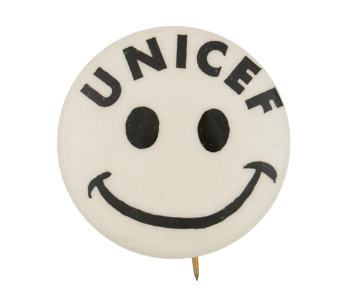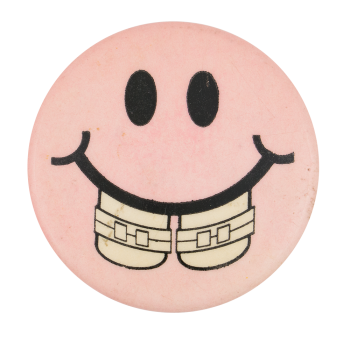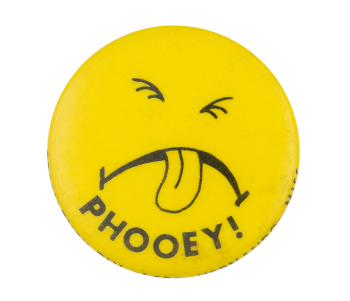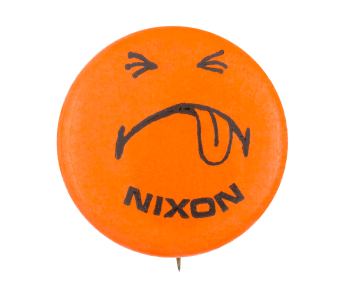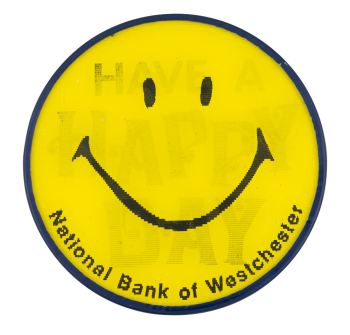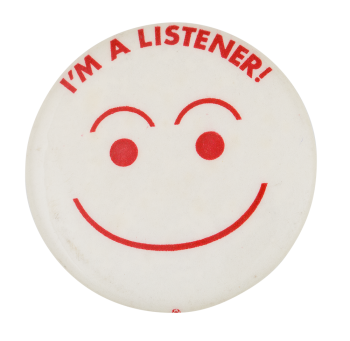Vampire Smiley
| Category | |
|---|---|
| Additional Images | |
| Sub Categories | |
| Image Description | Illustration of a smiley face with three rectangle teeth and two fangs on a yellow background |
| Curl Text | SAY IT WITH BUTTONS 1108 FRONT STREET LISLE, ILL 60532 (312)968-7458 |
| Back Style | |
| The Shape | |
| The Size | |
| The Manufacturer | |
| Additional Information | This is a variation of the classic smiley face design featuring vampire fangs and large middle teeth. The classic yellow smiley face is comprised of a yellow circle, two black dots for eyes and a black arc ending in serifs for a mouth. It was designed in 1963 by by commercial artist, Harvey Ross Ball. Ball was commissioned by The State Mutual Life Insurance Company to create a happy face to raise the morale of their employees. His version was created in 10 minutes. The design was printed onto more than 50 million buttons. Neither Ball nor the company copyrighted this smiley, so it was continually used by other businesses in their promotions. The design and concept is quite simple and was definitely used before Ball’s 1963 version. However his has become the most iconic. Variations have been used for advertising campaigns and in popular culture ever since. |
| Catalog ID | SM0157 |



